Easter is just around the corner—and even if your business doesn’t directly pertain to the holiday, you can still join the fun with some eggcellent Easter campaigns.
As families gear up to spend the day breaking bread and making memories together, this time of year is a particularly big opportunity for food marketers.
It’s $19 billion dollars big, to be exact.
According to the National Retail Federation, last year, the holiday was expected to bring in $18.2 billion dollars worth of revenue in the US alone—that’s a lot of chocolate bunnies.
Speaking of chocolate bunnies, according to Mintel, Easter chocolate launches rose 23% in 2018. Brazil, South Africa, Germany, the UK and France led the way in sales. In the UK, Mintel’s home country, the seasonal event was worth an estimated $835 million in 2018.
So, this year, we’re focusing on the food industry to help you reach families everywhere from their annual Easter egg hunts to their holiday dinner table. We’re revealing where marketers have the highest opportunities for targeting and how they can best create impactful campaigns.
Our insights are backed by millions of clicks and billions of impressions.
These insights are based on an analysis of 10,148,681 clicks and 7,754,841,162 impressions from campaigns like these, from Taste of Home:
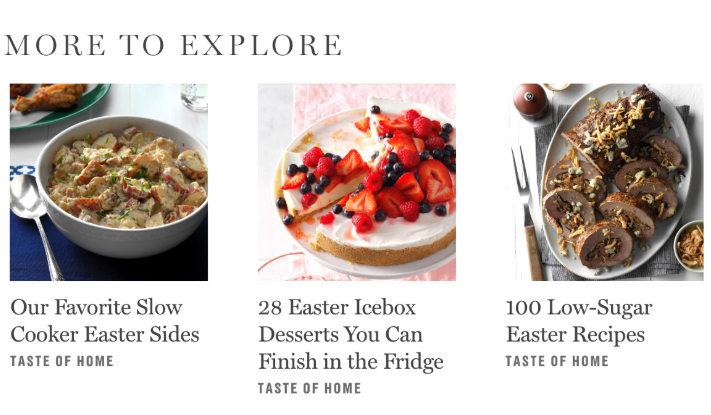
They’re using Taboola to recirculate Easter-related content, and they’re a great example for food marketers to follow when it comes to building their Easter campaigns.
No matter the strategy, we wholeheartedly believe that the best approach to maximizing your budget is the data-driven approach—and we’re using this data to help you capitalize on opportunity.
We define opportunity at the intersection of supply and demand. When there is high demand for content but low supply, it’s a high opportunity.
Demand in this context is defined as a click-through-rate (CTR). If someone is clicking on a piece of content, we assume they want to see it. Supply is the percentage of spend that marketers have allocated toward that type of content on our network.
Now that we’ve got that out of the way, here’s what we’ve found.
Who to target: building your Easter audience.
Your audience will always be unique to you and the content of your campaign. While we can’t tell you exactly who to target that’s best for your brand, we can tell you how to find them.
Follow these five steps for defining your Easter audience:
- Start your campaign with wide targeting. We recommend as wide as run of network.
- Spend the first week collecting data on the audience that responds. Use this data to identify audience segments that will work for you.
- In your second week, test a few of these audience segments. Pay particular attention to how different audiences are responding to different ad creatives.
- Adjust ad creatives accordingly. A/B test for better results by audience.
- Repeat.
Next, let’s talk about content types. Choosing what content to run will have an impact on how your audience responds and the actions they’ll take.
What to run: choosing content that will make the biggest impact on sales.
The biggest opportunity for marketers in the food industry exists with photo galleries—there is a high demand for this type of content throughout the year, and not a lot of supply.
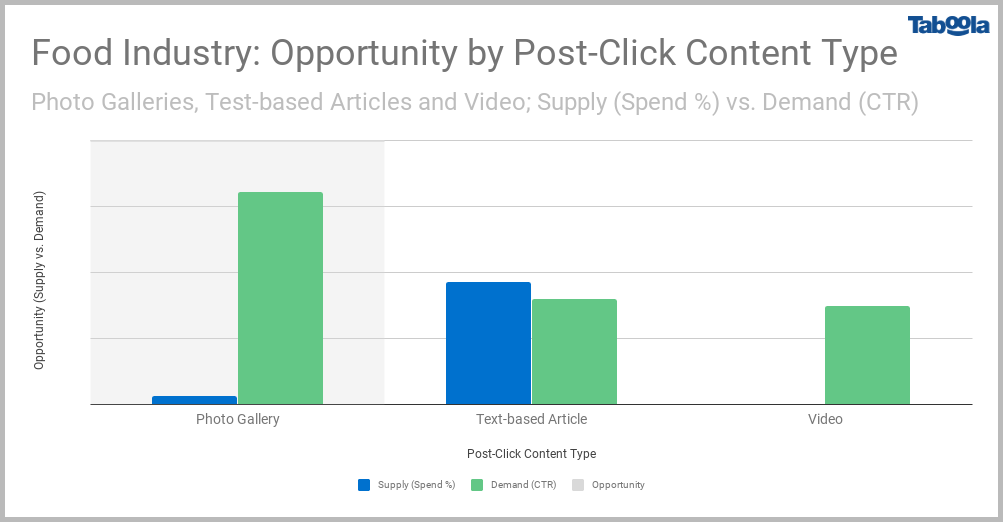
Video on the landing page also poses a very high opportunity for food marketers looking to stand out amongst the competition this holiday.
When to reach consumers: times of day and week that perform best.
Food content performs best when distributed on Sundays and Tuesdays. Both of these days see incredibly high demand from consumers interested in food products, and are both days where supply doesn’t meet demand.
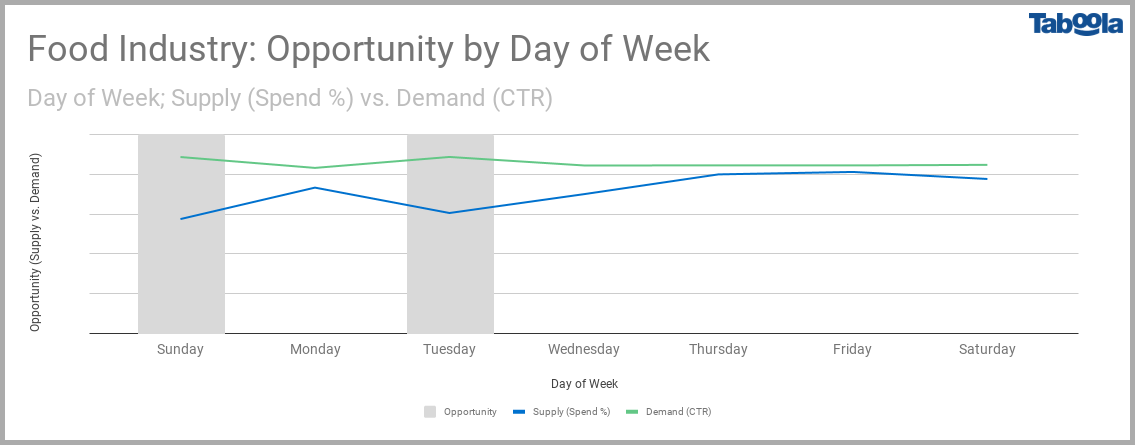
If you do test campaigns on Tuesdays, it’s important to note that the work day isn’t the best time to reach your consumers. The highest opportunity for success exists in the early morning hours or the evening hours, likely when meal planning occurs.
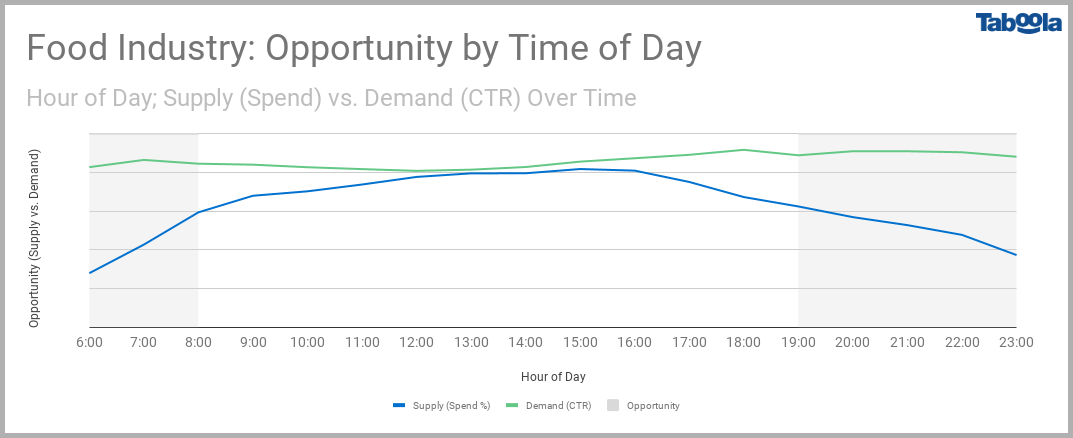
Where to reach consumers: device types that perform best.
You’ve heard that mobile is the place to reach consumers, and we’re here to tell you that that’s still true. The highest demand for food content exists on mobile devices first, tablet devices second and desktop devices third.
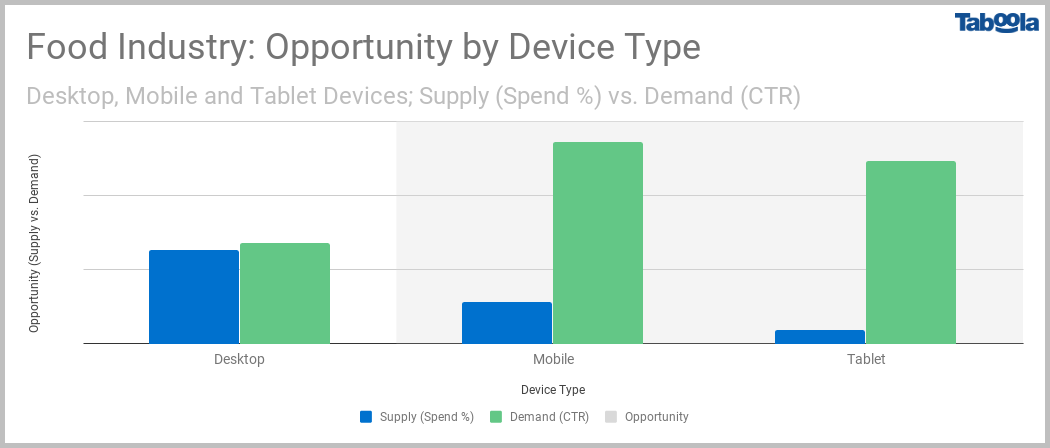
Test your campaigns on mobile devices this Easter to beat the competition.
How: creative insights and campaign examples to inspire you.
Before we dive into creative insights and examples, let’s talk about goals. The “How” of campaign planning surely includes how you’ll measure, or your key performance indicators (KPIs).
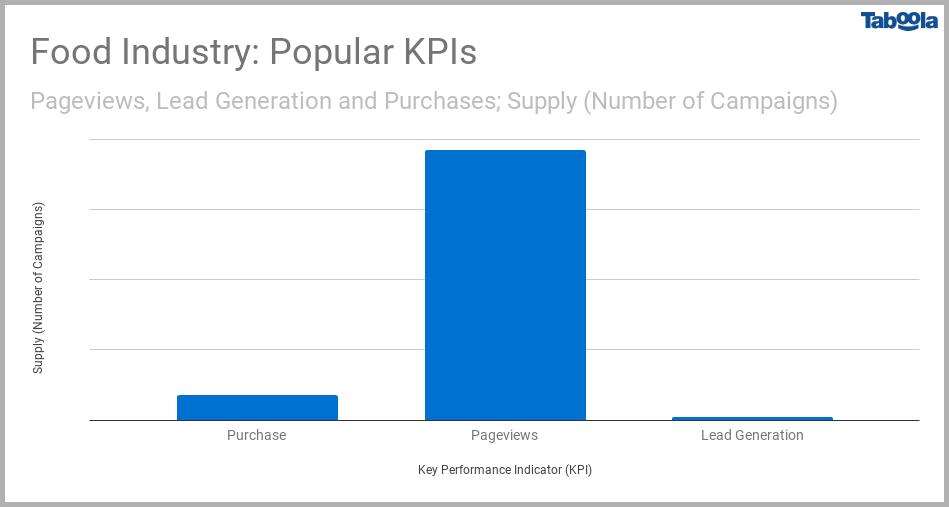
The competition in the food industry is measuring mostly pageviews when distributing content via native advertising and discovery. Test some branding campaigns through this type of platform this Easter.
You’re all set up to launch the perfect campaign—but you’re missing one critical element. Ad creatives that are eye-catching and high-performing.
Video creatives: action is key, including actors who eat.
Movement is one of the most defining elements of videos that show a high completion rate. For Easter, use videos that include actors who are eating. This can increase your completion rate by up to 34%. Other activities you might want to try are stretching and sitting.
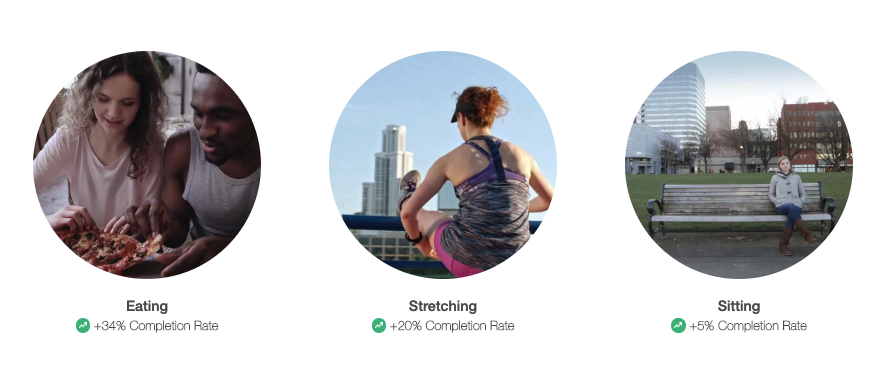
Sponsored content: keep it colorful and number your headlines.
When you’re running sponsored content—to drive consumers to your photo gallery content, for example—try using text in the image, and definitely use colorful photos. We’re seeing CTRs rise to up to 120% for these types of photos.
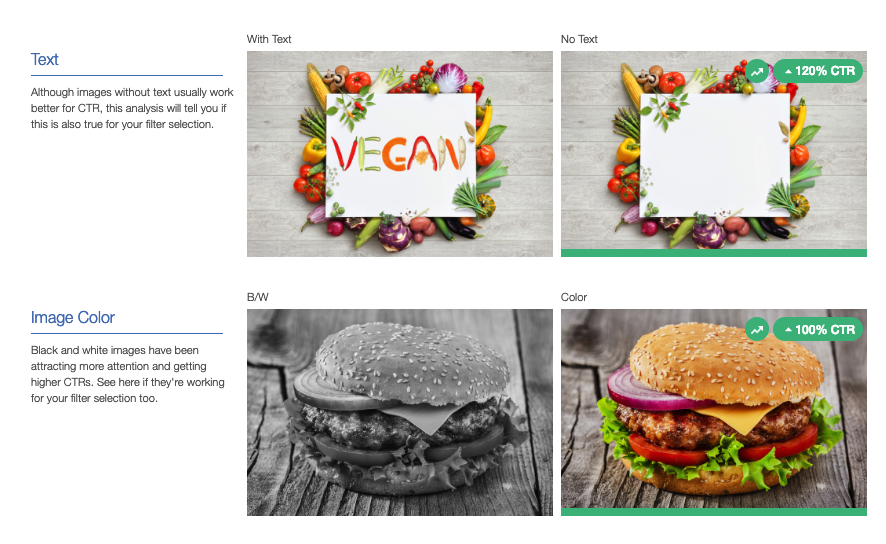
Your headlines are important too. For food content, try using numbered lists to drive demand. We’re seeing words like “one” and “three” increase CTRs by up to 134%.
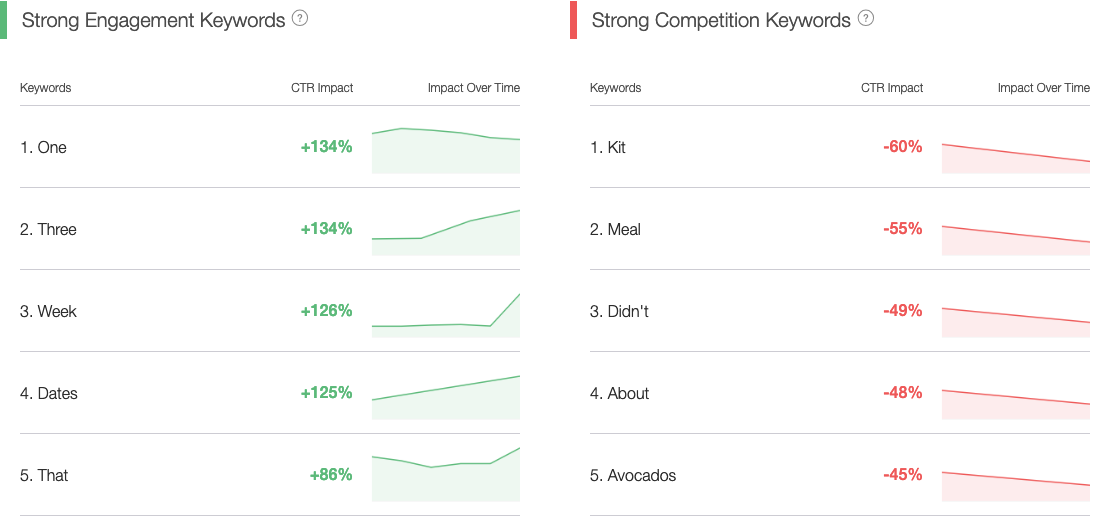
Campaign Example: Plated increased sign-ups by 12%.
Plated, a popular food subscription brand, used sponsored content campaigns to drive sign-ups through their article pages. A/B testing on thumbnails, headlines and content sources led to a huge increase in subscriptions.
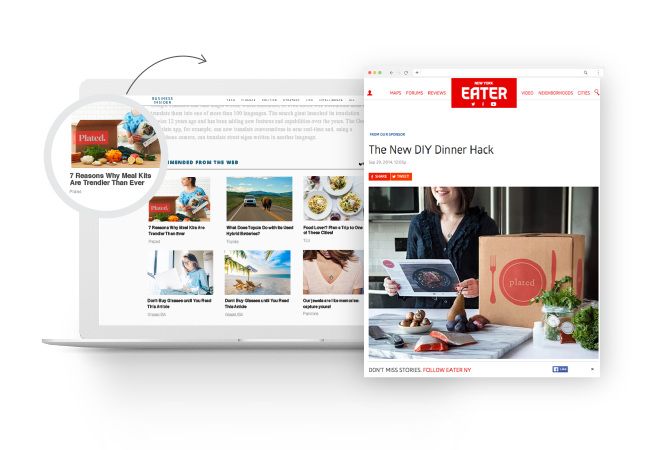
Finally, keep testing.
We can’t stress the importance of A/B testing enough. The nuances of your audience will effect these recommendations greatly.
Use these recommendations as a starting point for your Easter campaign.
- Who: use wide targeting at first to find audiences that meet your goals.
- What: test photo gallery or video content.
- When: try early morning or late night targeting on Tuesdays and Sundays.
- Where: focus on mobile devices.
- How: use native for your branding campaigns. Keep videos moving, images colorful and headlines numbered.
While best practices are a great place to start, it’s important to remember that they’re always changing, especially on the open web. Check out Taboola Trends for real-time insights by category, language and region.
Happy Easter!